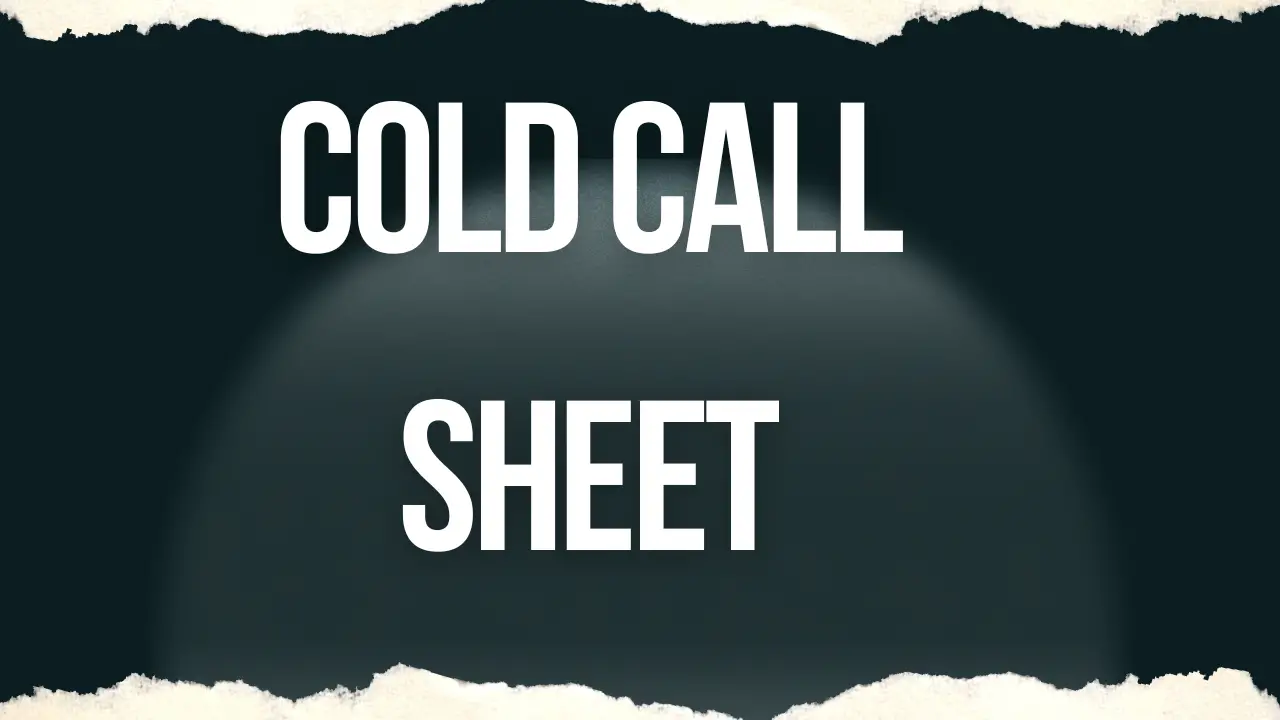Why a Cold Call Sheet is a Game-Changer
Think of your cold call sheet as your personal cockpit dashboard. It provides you with all the essential information you need at a glance. It should contain key details about your prospect, your Tired of fake leads? Get 100% verified email contacts from country email list value proposition, potential pain points, and a planned conversational flow. This preparation is a game-changer because it eliminates the fumbling and "ums" and "ahs" that can sabotage a call within the first 30 seconds. A sheet gives you the confidence to be direct, to listen effectively, and to pivot your conversation based on the prospect's responses. It’s not about being a robot reading a script; it’s about having a framework that allows you to be a more agile and articulate human.
Crafting the Perfect Opening
The first paragraph of your call sheet should be dedicated to the opening. This is where you grab the prospect's attention and establish a reason for them to stay on the line. Start with a concise and confident introduction, stating your name and company. Immediately follow with a compelling, benefit-oriented statement. For example, instead of "Hi, I'm calling from [Company Name]," try "Hi [Prospect's Name], my name is [Your Name] from [Company Name]. We help businesses like yours [insert specific benefit, e.g., 'reduce their operational costs by 20%']." This opening is direct, respectful of their time, and immediately establishes value, making them more likely to listen to what you have to say.

Navigating the Discovery Phase
The next section of your sheet should be a list of open-ended discovery questions. These questions are designed to uncover the prospect's challenges and needs. The goal here isn't to pitch your product; it's to listen and understand. Your sheet should have questions like: "What are your biggest challenges with [area your product addresses] right now?", "How are you currently handling [specific task]?", or "What would a successful outcome look like for you in this area?" By asking these questions and actively listening to the answers, you can tailor your pitch to their specific situation, making it far more relevant and impactful.
Highlighting Your Unique Value Proposition
Now that you've uncovered their needs, your call sheet should have a section dedicated to your value proposition. This isn't a long list of features; it's a few bullet points that connect your solution directly to the pain points you just discussed. For example, if they mentioned a challenge with inefficient workflow, your value proposition bullet point should be something like: "Our software automates [specific task], freeing up your team to focus on [more important tasks]." This section is about demonstrating how your solution is the answer to their problem, using their own words and context.
The Art of the Call to Action (CTA)
The final section of your cold call sheet is the call to action. This is where you move the conversation forward. Your CTA should be a clear, single next step. Don't overwhelm them with options. A great cold call rarely ends in a sale; it ends in an agreed-upon next step. Your sheet should include a few options, such as: "Would you be open to a 15-minute demo next week?", "How does your calendar look for a brief follow-up call with my manager?", or "I'd love to send you a quick email with more information; what's the best address?" By having these pre-written, you can confidently close the call with a clear path forward, significantly increasing your chances of securing that next appointment.
Continuous Improvement
Your cold call sheet is a living document. It should never be static. After each call, take a moment to reflect. What worked? What didn't? Did a certain question elicit a particularly good response? Was there a phrase that fell flat? Update and refine your sheet regularly. Analyze your successful calls and integrate the elements that worked into your blueprint. Share your best practices with your team and learn from their successes as well. By consistently refining your call sheet, you'll ensure that your cold calling strategy remains sharp, effective, and continuously improving.